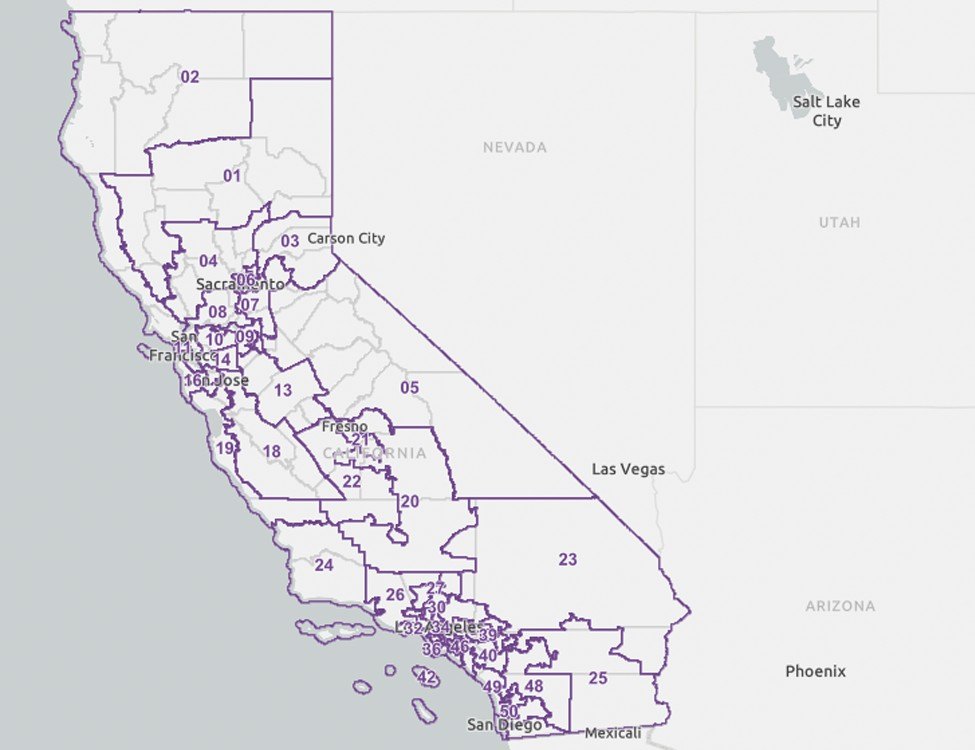A highly contentious issue is in the hands of voters in California. Eligible residents are going to the polls in a special election Nov. 4 to decide whether to approve Proposition 50—a proposal to temporarily redraw the state’s congressional district lines.
The Golden State hopes to offset a move by Texas that was designed to create more Republican seats in the House of Representatives in next year’s midterm elections.
If passed, California Gov. Gavin Newsom hopes more Democratic seats will be gained in the 2026, 2028, and 2030 elections.
California voters who mark their ballot “yes” are saying they want California to redraw its congressional districts to give Democrats a potential advantage in the U.S. House of Representatives.
“No” voters are saying they want California’s congressional district lines to remain as they were drawn by the state’s nonpartisan citizen redistricting commission.
But just like the division of politics, it’s pitting neighborhood against neighborhood.

Rural versus urban
A Berkshire Hathaway heir has poured millions of dollars to fight Newsom’s redistricting plan. Charlie Munger Jr. has spent millions of his late father’s money to stop the plan he says will “gerrymander” the state in favor of Democrats.
In an op-ed for The New York Times, Munger wrote, “Gerrymanders are a cancer, and mid-decade gerrymanders are a metastasis.”
In certain parts of California, concerns stem from district lines that would be redrawn affecting neighboring rural and urban areas.
For example, in San Diego County, the rural town of Lakeside has a population of nearly 22,000, according to Data USA, and is represented by longtime Republican Rep. Darrell Issa. The nearby city of El Cajon, with a population of 106,000, is represented by Democratic Rep. Sara Jacobs. The November ballot measure would temporarily draw new House maps that would join the rural and urban communities, according to CalMatters.
“I don’t like that they’re changing that and lumping us in the urban areas,” Fredrich Bahrke, a 65-year-old former Naval officer who lives in Lakeside, told the publication. “It’s going to put us in a district with people with very different views in our area.”
Jessica Vance, a San Diego real estate agent, says she has noticed buyers are quietly factoring in neighborhood governance and culture. “While very few people buy a home because of district maps, they are more aware that representation and community identity can influence long term value,” Vance tells Realtor.com®.
She explains that the redistricting debate isn’t at the top of the list for her clients, but she recognizes how it can subtly impact a neighborhood’s desirability.
“Redrawing district maps can change which communities feel well-represented, what public investments they expect, and how a neighborhood even feels,” Vance explains.
Realtor.com senior economist Jake Krimmel notes that “usually, a discussion of home values and maps centers on school districts or municipal boundaries. And this is for good reason: Things like good schools, safer streets, well-maintained parks and public spaces, and lower property taxes can all increase home values.
“Families are willing to pay more to enjoy these local public goods and services, and typically you have to live within certain catchment areas (e.g., school districts or city boundaries) to do so.”
As it stands, the September median list price for San Diego County is $948,500, with homes spending a median 49 days on the market. Buyers across the state are paying some of the most expensive home prices in the country.
“Cities that gain stronger representation or remain politically aligned with local priorities could see a small boost in home values. On the other hand, areas that feel politically marginalized may experience softer demand,” Vance says.
Krimmel says, “If some representatives are able to bring back more federal dollars to their district, that could certainly improve quality of life and property values. Infrastructure projects and other forms of local economic development could be key here.”
Map mayhem
California isn’t alone in the redistricting debate.
The Lone Star State made national headlines in August when state lawmakers fled to avoid voting on a Republican redistricting plan. They eventually returned to Texas and, in the end, Gov. Greg Abbott signed a new congressional map into law that all but secures an additional five Republican-leaning House districts seats.
Redistricting has been going on in other states as well ahead of next year’s midterms, as both parties are looking for ways to gain or maintain control of the House. As it stands, it’s a slim margin with Democrats needing three seats to take control.
Monday, some New York voters filed a lawsuit against the state challenging its congressional map and claiming “racial vote dilution.” The lawsuit comes as New York City is in the final stretch of a highly contested race for mayor.
Democrat Zohran Mamdani leads independent Andrew Cuomo and Republican Curtis Sliwa with housing as one of the hottest topics.
In Missouri, lawmakers are pushing for a revised U.S. House map that could potentially give Republicans a better advantage.
North Carolina lawmakers approved a new district map that could potentially unseat a Democratic incumbent. Utah is also trying to redistrict its maps.
In Virginia and Colorado, Democratic leaders are pushing for new map lines to be drawn. Republicans in Indiana, Nebraska, and Kansas are also in favor of redistricting.
Ohio will have new congressional districts for next year’s midterm elections because the current congressional map expires in 2026 and state lawmakers are required by law to redraw the districts this year.
States typically redraw their congressional districts following a U.S. census every 10 years.

